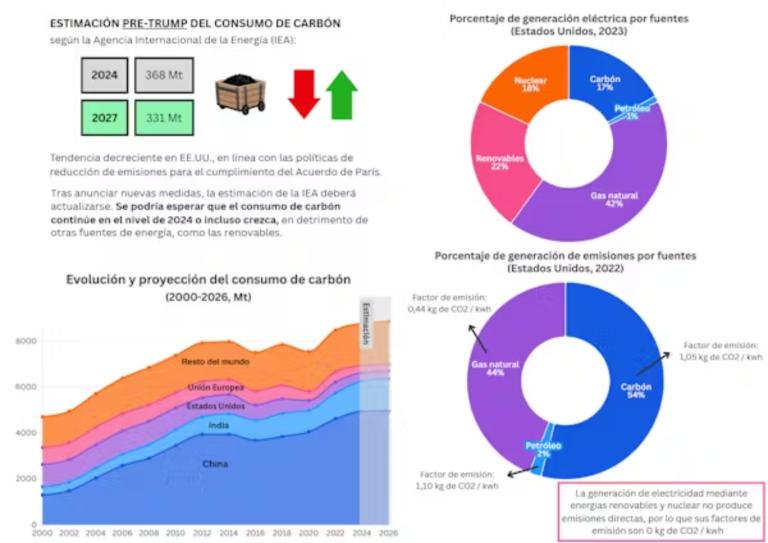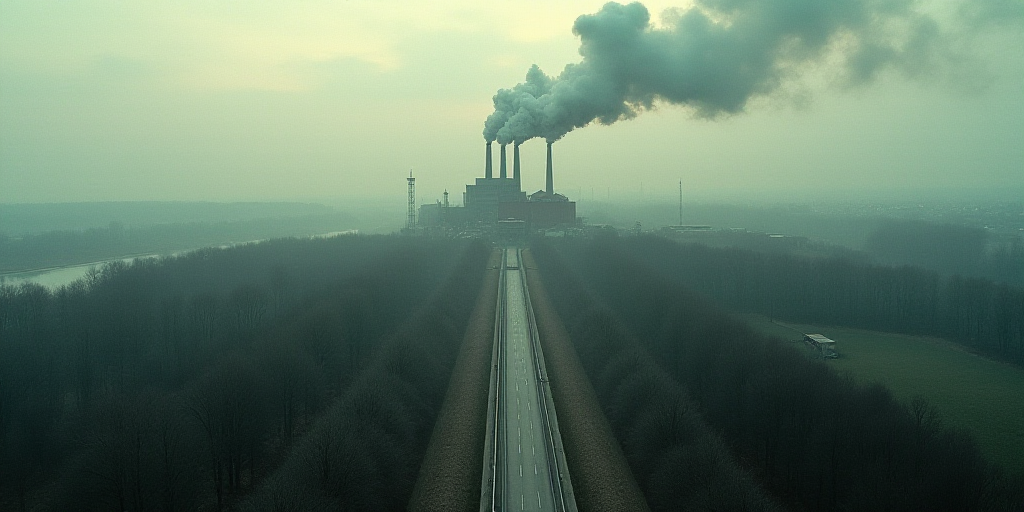More Coal: Trump’s Counterproductive Stance on Climate Change
As the second term of Donald Trump’s presidency unfolds, it is disrupting nearly every conceivable aspect of the United States: trade, geopolitics, social security, healthcare, education, and science. Amidst this whirlwind of news, the dismantling of U.S. energy policies aimed at reducing emissions risks flying under the radar.
While the European Union (EU) continues to strive towards meeting its climate goals—albeit with reduced ambition in recent months, as seen in the Omnibus decree aimed at bureaucratic simplification—the Trump administration appears to be moving in the opposite direction.
Trump’s Negationist Climate Stance
Contrary to the scientific community and international organizations that emphasize the need for intensified climate policies, Trump’s administration has adopted a negationist stance and slowed down environmental policies. By labeling the fight against climate change as an “ideology” harmful to the U.S., Trump has rolled back environmental regulations, cut funding for researchers, and even attacked green policies of certain states.
Once again, Trump has withdrawn the U.S. from the Paris Agreement (as he did during his previous term), promoted oil and gas production (hoping to sell to the EU), and recently signed four executive orders to increase coal usage for electricity generation.

Tendencias en el consumo de carbón. Los autores, a partir de datos de U.S. Energy Information Administration y de la Agencia Internacional de la Energía.
Before Trump: Trends Towards Reduction
Examining global CO₂ emission trends, as reported in recent studies like the TWIN SEEDS project, reveals a 65% increase in carbon footprint between 1995 and 2018, with the U.S. being the second-largest emitter after China in recent years.
The carbon footprint represents emissions released to produce goods and services consumed in a country, including those emitted within the country as well as associated with imported products for production or direct consumption.
Despite this, the U.S. has reduced its impact as both a producer and, primarily, a consumer since the 2008 crisis. This is due to significant drops in emissions intensity (emissions per million dollars of produced goods) by over 40% since 1995 in its domestic portion and minimal growth in the imported portion (emissions embedded in demanded goods from abroad).
In essence, the rise in non-fossil energy sources and increased efficiency have enabled the U.S. to contribute to emission reductions despite growing demand and dependence on intermediate goods from the rest of the world, especially China.
What’s Next for Emissions?
Despite his intentions, Trump’s policies may result in a neutral or even reduction effect on emissions, depending on which factors ultimately dominate.
On one hand, his policies penalizing renewable energy and promoting fossil fuels can only lead to increased emissions within the U.S. territory. The International Energy Agency had predicted a decline in coal demand in the U.S., but under Trump’s new scenario, an increase in coal usage—at the expense of other energy sources like natural gas (which emits 50% less than coal) or renewables—could occur. In this context, the more polluting electricity mix to power AI and cryptocurrency centers will be used.
However, some of Trump’s other policies might reduce emissions. Firstly, a decrease in demand—as demonstrated by the COVID-19 pandemic—is the quickest way to reduce emissions. If Trump’s economic policy reduces U.S. growth, as various sources are already predicting, this could happen. However, the long-term effect of increased emission intensities will be more pronounced.
Secondly, the impact on the U.S.’s carbon footprint will depend on how global trade reorganizes itself. If tariffs lead to partial restructuring of global value chains, the U.S.’s carbon footprint could theoretically decrease if imports from China and other East Asian countries are replaced by domestic U.S. production or imports from the EU.
However, it could also increase if imports from the EU are replaced by domestic U.S. production, which is more polluting and may become even more so due to Trump’s policies.
Read more: Do European consumers truly distrust American products? An examination of Trump’s claims on trade deficits.
Meanwhile, the Rest of the World…
For the EU, Trump’s environmental policies could make U.S. products less suitable for consumers and businesses, even without considering tariffs. Two EU policies could play a role:
- Carbon Border Adjustment Mechanism (CBAM): Although currently applied to a limited range of products, this carbon tax on imports could increase the price of U.S. goods if their CO₂ content (direct or indirect) rises due to increased coal usage.
- EU Due Diligence Directive: This directive requires certain companies (currently, the largest ones) to take responsibility for emissions generated not only directly in their production processes but also indirectly through their global value chains.
These effects may be delayed due to the inherent uncertainty of the proposed policies, but they clearly undermine efforts against climate change with monetary and human costs affecting not just the U.S., but the entire world since climate change is a global phenomenon.






